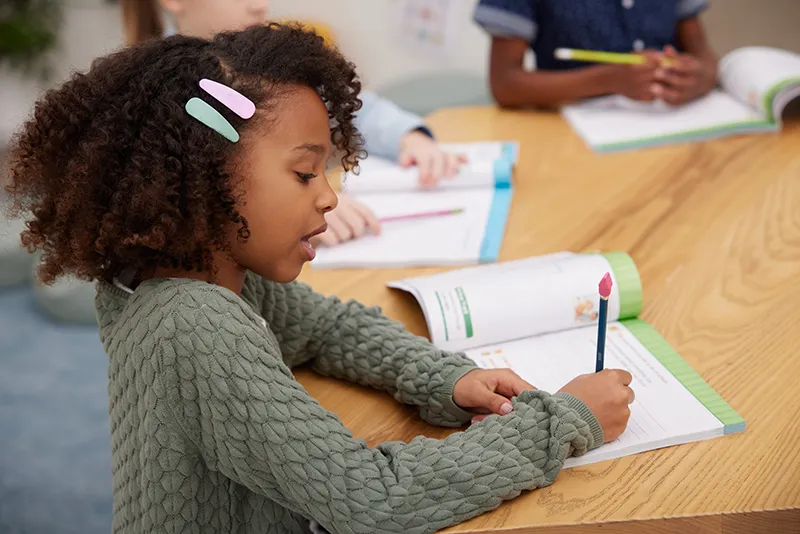The essentials of literacy instruction.
Literacy is the foundation of learning across all disciplines. As the research and knowledge base, known as the Science of Reading, continues to evolve, it’s time to expand our definition of what science-based reading instruction entails. Let’s start thinking in terms of the Science of Literacy—a phrase that encompasses the Science of Reading, the Science of Writing, and Knowledge Building more broadly.
These bodies of research unlock the interrelated skills needed to build strong readers, writers, and thinkers. Together, we can apply the Science of Literacy to help Florida students explore their curiosities, develop their interests, and share them with the world.
Florida K-12 educators, we’d like to hear from you! We are planning a series of back-to-school professional learning events on all things literacy. As we work to shape these events, we want to be sure they’re beneficial to you and your instruction. Share your event preferences in the survey below, and we’ll see you this fall!
We’re honored to partner with renowned experts and researchers—including McGraw Hill curriculum authors Dr. Jan Hasbrouck and Dr. Douglas Fisher—to explore and apply the latest literacy research.


While phonics has been a large focus, the Science of Reading goes beyond phonics. It offers studies on and considerations of a variety of literacy topics and skills, including amount of instruction, curricular areas (phonemic awareness, vocabulary, comprehension, and more), and quality and methods of instruction.
In this video, Dr. Hasbrouck speaks to how the Science of Reading supports explicit, systematic, and comprehensive instruction.
What About Secondary Learners?
The Science of Reading is just as critical for students in grades 6–12. For secondary learners, it focuses on building academic language, comprehension, digital literacy, writing, and other important skills students need for literacy success.
Learning to write is a key part of literacy education, and teaching students to write is teaching students to express themselves, to communicate, to explore ideas, and to think critically.
Reading and writing are also methods of communication built upon similar skills and knowledge and instruction for both can work together to reinforce essential literacy skills.
Learn more about the importance of research-based writing instruction from experts Dr. Steven Graham, Dr. Karen Harris, and Dr. Young-Suk Kim.

Pillars of an effective writing program
As research grows on the Science of Writing, teachers can continue to implement strategies to develop their students’ writing skills. Learn more about ten key elements of strong writing instruction in this whitepaper from Dr. Timothy Shanahan.
Building knowledge is a critical part of literacy instruction as it equips learners with the context and background knowledge that they need to fully engage with the texts they are reading. Simply put, the more you know, the better you can understand, and the more you can learn.
What does building knowledge look like in the classroom?
Building knowledge is an ongoing process in each student’s learning journey. Providing students with opportunities to gain content knowledge in early grades can help set them up to become successful readers and writers.